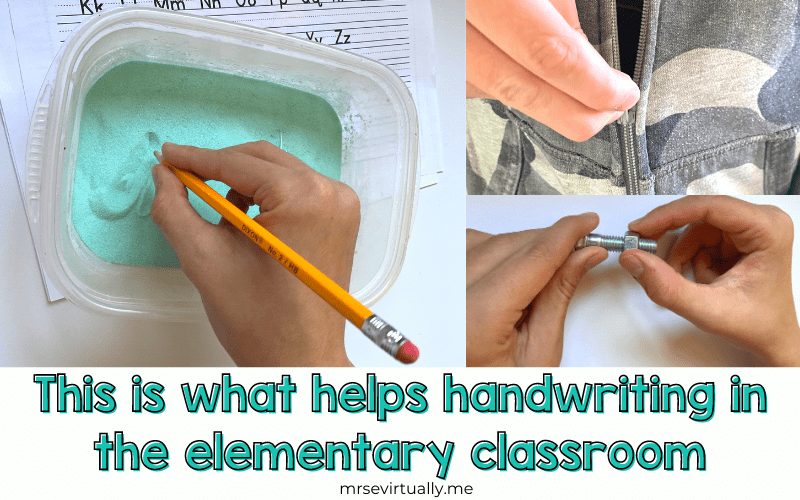
Student handwriting can be a pretty controversial topic among parents and teachers. This blog post contains my opinions from observation and practice in my elementary classrooms in grades 2-5 as well as subbing in Kindergarten. I would love to hear what you thing too, whether you are a parent or a teacher. Let me know what you think in the comments below.
So I think that handwriting letter formation is important. I know that it is sometimes the last thing that a teacher wants (or can) take the time to focus on. It takes time and energy that is exhausting, but it also something that is used all the way through school Pre K through 12th grade. I have seen how difficult it is to change grips, student mindsets around handwriting and letter formation.
Pencil Grip
Grip is hardest to master if students have poor fine motor control. Some things that students can do to build fine motor control would be to screw a nut onto a bolt. Any size nuts and bolts will do and they are easy to get at the hardware store. Just make sure the nut fits on the bolt before you buy it. When I had a student that had trouble with fine motor control I looked into ways to practice.
In kindergarten button sorting or counters practice the pincher grasp. Zippers and buttons are another great practice that students are sometimes missing because it is just easier and faster for adults to do it, rather than letting the child do the work. Friction resistance is necessary for students to create strong muscle memory for grip and letter formation. So pencil and paper is better than white board and marker.
Some of the grip problems I encounters were only using two fingers instead of a tripod grip, upside down hand and using 4 fingers to grip. Incorrect grips, do not build dexterity in the hand to be able to manipulate the pencil or other fine motor tasks efficiently. Showing care and patience when correcting a student’s grip is paramount. Some tools that I have used to help students correct grips are short pencils, and grippers for pencils.
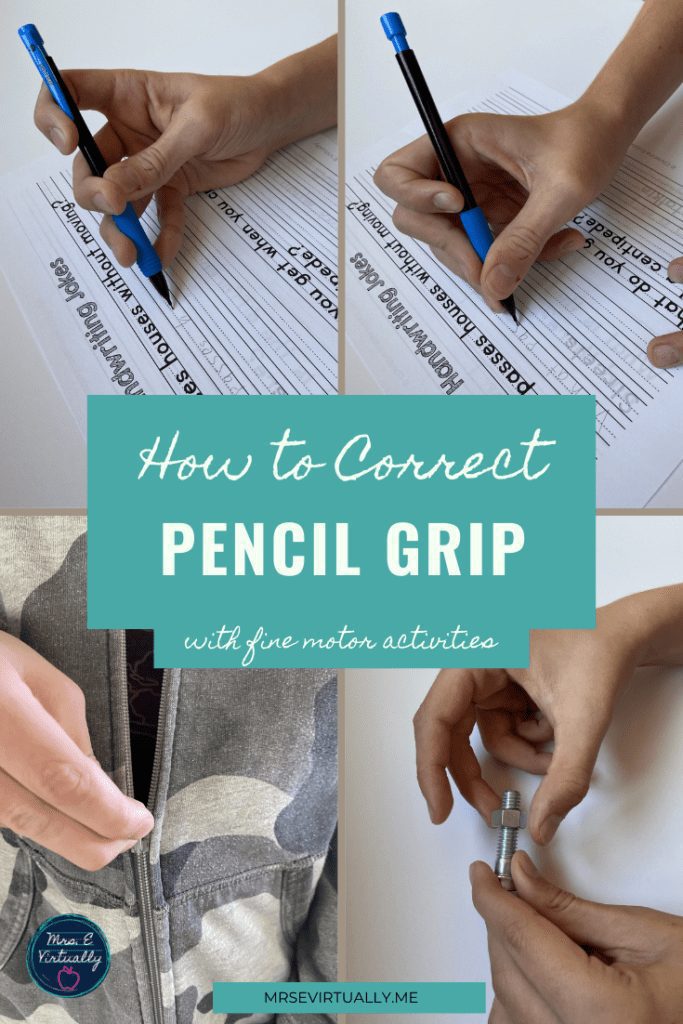
Student Handwriting Mindset
By second grade the students (for the most part) had a correct grip on the pencil so I was challenged with student mindset with handwriting. One of the things that students loved the most in my classroom was my colored and boxes. I got some colored sand and rubbermaid boxes and they became student’s favorite part of learning new letters or practicing letter formation.
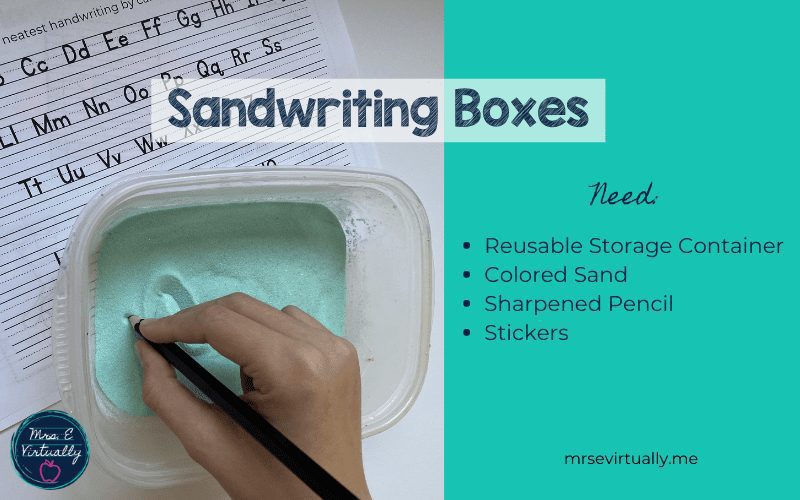
Making sand writing boxes
Need:
Rubbermaid Take Alongs 4 cup rectangular Storage Containers
Fill Take Along container less than halfway with colored sand. (really just enough to cover the bottom and be about 1/4 in thick. Put a sticker on each ‘dot’ on the lid. This helps students know where to push when putting the lid on and securing the lid every time!
When students are using the handy sand boxes they can use a sharpened pencil to practice correct grip as well as helping them see the letters in the sand. Practicing in sand is more fun than paper, it still provides enough resistance to create muscle memory. I used these sand boxes in 2nd and 3rd grade. In third grade it was awesome for helping students practice formation of new cursive letters.
I also think making handwriting fun is something that can help change student mindset around handwriting. That is why I make my fun handwriting pages that are a fun way to work on handwriting. Students can practice letter formation and creative writing by copying jokes, panagrams, and personal practice with capital letters. The pages can be printed individually or made into a handwriting book to supplement classroom handwriting curriculum. You can get it on Teachers pay Teachers or here on my website. Thanks for your support!
Thoughts on Cursive Handwriting
I am also pro cursive. My reasons are short. I think that everyone needs a signature that is unique to them for legal documents. If students cannot read cursive then there is a vast amount of material that will be inaccessible to them. It is form of art that is beautiful. Cursive can take something ordinary and make it extraordinary. (Cursive vs Manuscript picture)
I have taught cursive in 2nd through 5th grades and I think it is important in all the grades. It is up to the teacher to take time to give cursive instruction, use cursive to practice student reading and for students to see a model. When my district changed to second graders learning cursive I was worried that it was too early for students to do correctly. I was pleasantly surprised that in my classroom they were actually more curious about the letters and writing in cursive than my third graders ever were. I would even write their name in cursive on their desk and they loved seeing their name in a new and ‘fancy’ way.
I know that not all grownups use cursive on a daily basis but grownups do need a signature and need to be able to read cursive. My hope is that students get enough practice with cursive to be able to read it and have a unique signature.
Let me know your thought about handwriting in the comments. Happy writing!
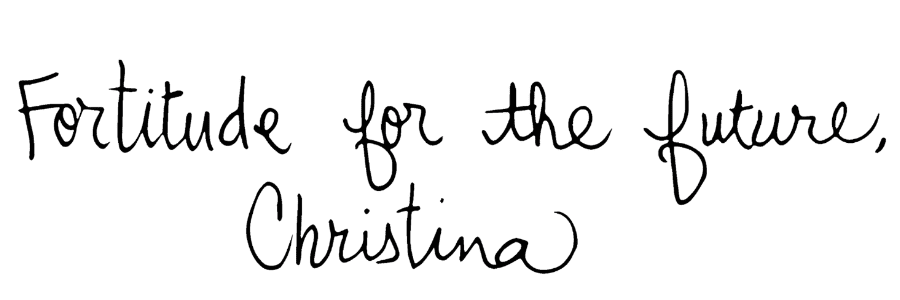
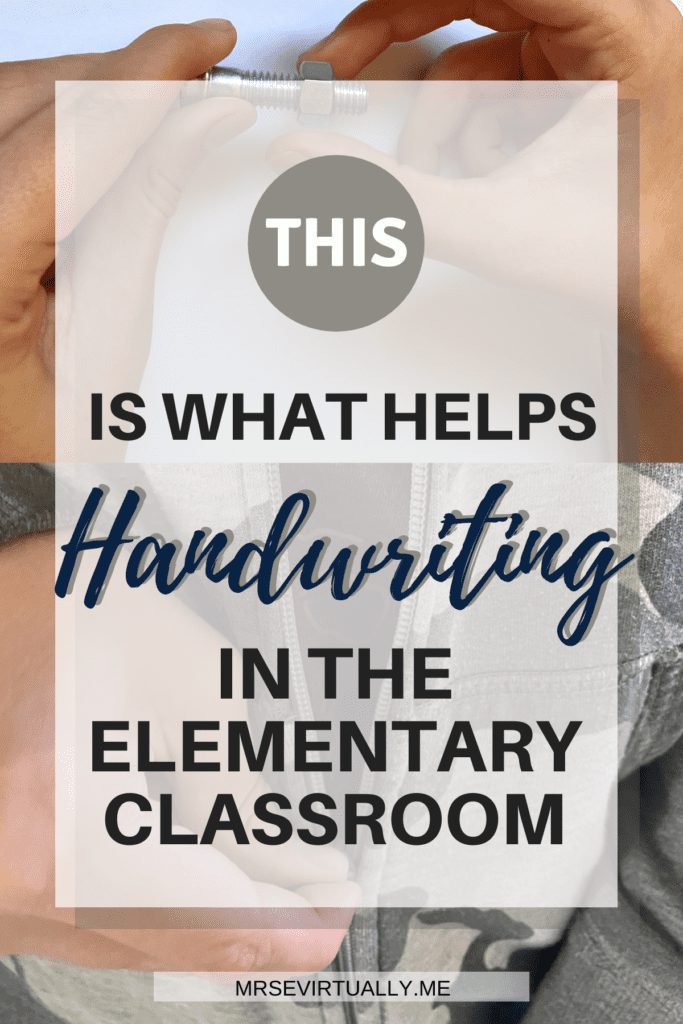

Leave a Reply